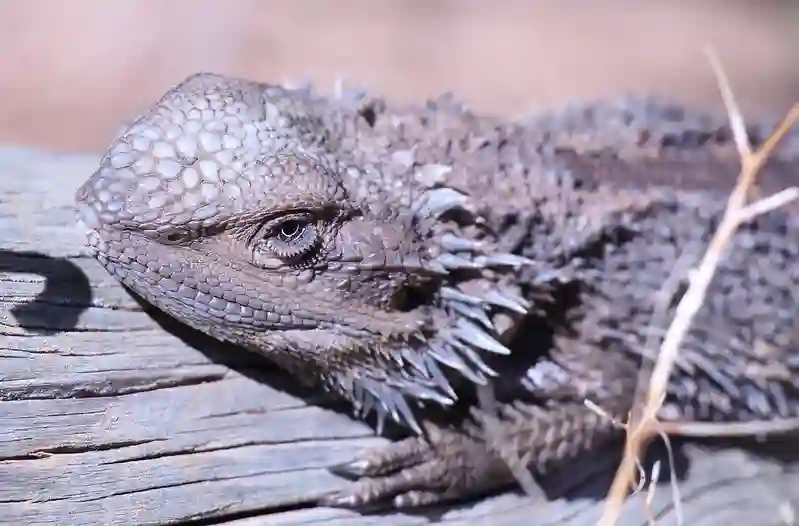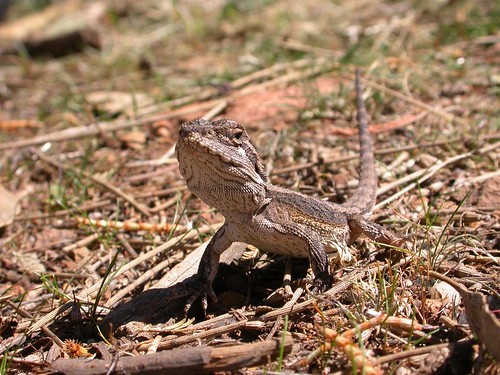Swollen legs can be caused by numerous issues, ranging from poor nutrition, to insufficient hydration, to bacterial or fungal infections. If left untreated, swollen legs can have serious implications on the health of the bearded dragon and can even lead to death.
As a reptile health expert, it is important to take swift action when faced with this issue and to determine the best course of action.
In this article, we will discuss the common causes of swollen legs in bearded dragons and provide you with tips on how to diagnose and treat this condition.
By reading this article, you will gain a better understanding of how to properly care for your pet and help them recover from swollen legs.
Identifying the Cause of Swollen Leg
Examining the affected leg for any visible injuries or deformities
The first step in identifying the cause of a swollen leg in a bearded dragon is to examine the affected leg for any visible injuries or deformities. This can include cuts, bruises, broken bones, or other signs of trauma.
Carefully examine the leg from top to bottom, looking for any abnormalities that may be causing swelling or discomfort.
Checking for signs of infection or inflammation
Infections and inflammations are also common causes of swollen legs in bearded dragons. Look for redness, warmth, and tenderness around the affected area.
If there is an infection present, it may also emit an unpleasant odor. You should also check if there are any open wounds that could potentially lead to infections.
Conducting a physical examination to rule out any underlying health conditions
A physical examination can help rule out any underlying health conditions that may be contributing to the swollen leg. During this exam, your veterinarian will check your bearded dragon’s overall health and look for signs of disease or other health issues that could be impacting their limb.
It’s important to note that there can be many different factors contributing to a swollen leg in a bearded dragon – including metabolic bone disease and organ failure – so it’s crucial to have a professional diagnosis from your veterinarian before administering any treatment.
Treating Swollen Leg in Bearded Dragons
Administering Pain Relief Medication
One of the first steps in treating a swollen leg in a bearded dragon is to alleviate their discomfort and swelling. Pain relief medication can help to ease any pain or discomfort that your pet may be experiencing.
Over-the-counter drugs such as ibuprofen should not be given to bearded dragons as they are toxic and can cause liver damage. Instead, it is recommended that you consult with a veterinarian who specializes in exotic pets for guidance on pain relief medications that are safe for your pet.
Applying Warm Compresses
Another effective way to reduce inflammation and promote healing is by applying warm compresses to the affected area of your bearded dragon’s leg. To do this, you will need to soak a clean cloth or towel in warm water and gently apply it to the swollen area.
Be careful not to apply too much pressure as this can cause additional damage or pain. Repeat this process several times per day until the swelling has subsided.
Keeping a Clean Environment
Ensuring that your bearded dragon is kept in a clean and comfortable environment is crucial for helping it recover from a swollen leg.
This means regularly cleaning their enclosure, providing fresh water, and monitoring their food intake. Be sure to remove any uneaten food promptly as it can attract harmful bacteria which may cause further infections or complications.
Providing Proper Nutrition, Hydration, and Supplements
Proper nutrition, hydration, and supplements are essential components of healing for your bearded dragon’s swollen leg. A healthy diet rich in fresh vegetables, fruits, and insects will provide vital nutrients necessary for recovery while ensuring proper hydration through regular access to fresh water or misting will keep them hydrated during recovery periods.
Additionally, supplements such as calcium and vitamin D3 can help promote healthy bone growth and repair. It is important to consult with a veterinarian who specializes in exotic pets for guidance on the proper diet and supplements for your bearded dragon.
Preventative Measures for Swollen Leg in Bearded Dragons
Maintaining proper hygiene practices, including regular cleaning of the enclosure
One of the most important ways to prevent swollen legs in your bearded dragon is to maintain a clean and hygienic living environment. This means regularly cleaning the enclosure and removing any uneaten food or waste.
It is also important to provide your bearded dragon with clean water daily and regularly disinfect any surfaces that may come into contact with them or their food.
Avoiding overcrowding and providing adequate space for movement
Overcrowding can lead to stress, aggression, and injury in bearded dragons. Providing an adequate amount of space for each dragon will help reduce the risk of injuries caused by overcrowding. Additionally, ensuring that there are enough hiding spots and basking areas will help prevent territorial disputes between multiple dragons.
Ensuring appropriate temperature gradients within the enclosure
Bearded dragons require specific temperature gradients in their enclosures to regulate their body temperature.
It is important to provide a basking area where they can warm up under a heat lamp, as well as cooler areas where they can regulate their body temperature. Failure to provide appropriate temperatures can lead to digestive issues, respiratory infections, and other health problems.
Providing proper substrate that is not too abrasive
The type of substrate used in the enclosure can also affect your bearded dragon’s health. Avoid using substrates that are too abrasive as they can cause skin irritation or abrasions on their feet and toes which could lead to swelling over time.
Additionally, some substrates such as sand or small pebbles may be ingested by your dragon which may cause impaction or intestinal blockages resulting in swelling.
Overall, providing proper care by maintaining the cleanliness of the enclosure, avoiding overcrowding while providing adequate space for movement, ensuring appropriate temperature gradients within the enclosure, and providing a proper substrate that is not too abrasive can all help prevent swollen legs in your bearded dragon.
Conclusion
Summary of Key Points
Swollen legs in bearded dragons can be caused by a variety of factors, including injury, infection, or underlying health conditions. It is important to identify the cause of the swelling and provide appropriate treatment as soon as possible to reduce discomfort and prevent further complications.
Treatment options may include administering medication for pain relief, applying warm compresses to the affected area, keeping the enclosure clean and comfortable, providing proper nutrition and hydration, and ensuring appropriate temperatures within the enclosure.
Encouraging Regular Health Checks
Regular health checks are essential for maintaining your bearded dragon’s overall health and well-being. By monitoring your pet’s behavior and appearance on a regular basis, you can identify any potential health issues early on and seek appropriate treatment before they become more serious.
A Positive Outlook
While swollen legs in bearded dragons can be a cause for concern, with prompt identification and treatment it can often be successfully resolved. By following proper care guidelines including regular check-ups with a qualified veterinarian, you can help ensure that your bearded dragon remains healthy and happy for years to come.


